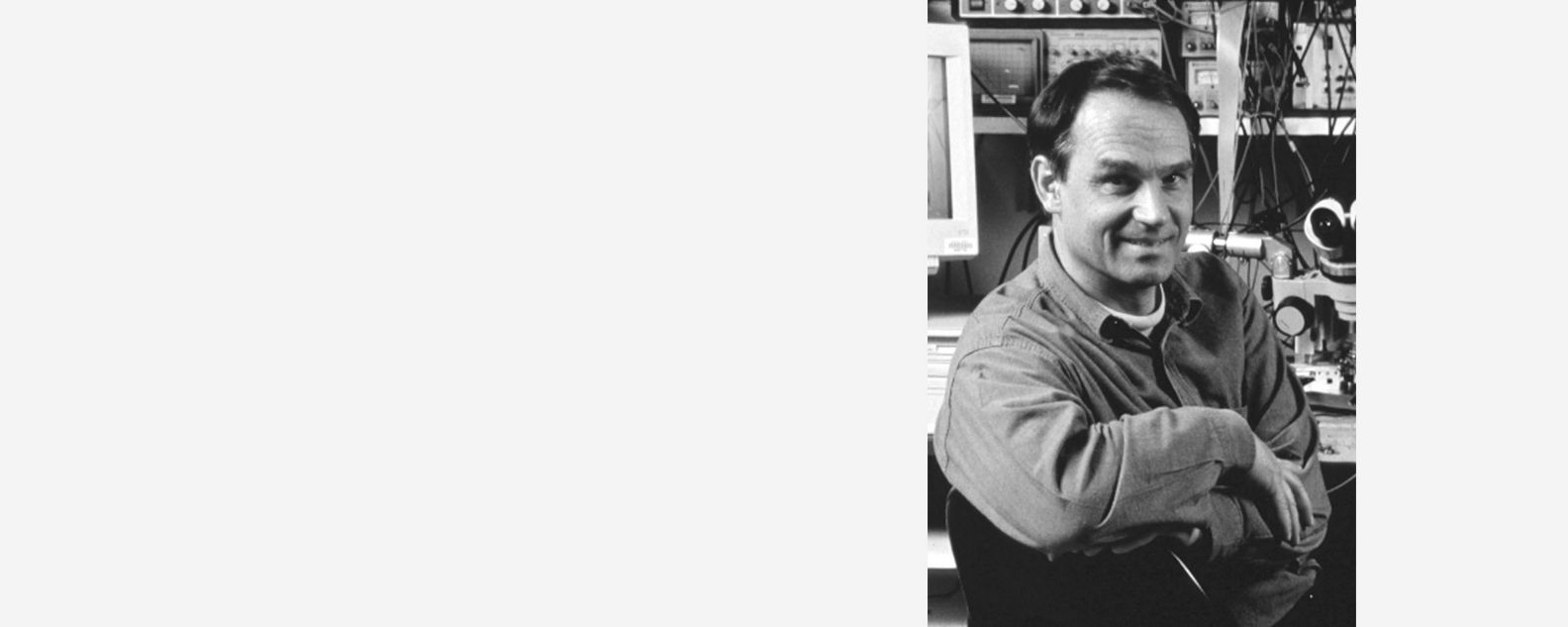About cookies on this site Our websites require some cookies to function properly (required). In addition, other cookies may be used with your consent to analyze site usage, improve the user experience and for advertising. For more information, please review your options. By visiting our website, you agree to our processing of information as described in IBM’sprivacy statement. To provide a smooth navigation, your cookie preferences will be shared across the IBM web domains listed here.
Home
history
Gerd Binnig
Gerd Binnig
The co-creator of the scanning tunneling microscope opened the door to nanoscience and won a Nobel Prize

When Gerd Binnig joined IBM as a young researcher in 1978, he professed to be more adept at playing the guitar and kicking around a soccer ball than at understanding the complex world of physics. That was a mere eight years before he accepted a Nobel Prize in Physics for his role in creating a device widely credited with spawning the field of nanotechnology and hastening the miniaturization of consumer electronics.
Binnig is most well-known for co-inventing, with colleague Heinrich Rohrer, the scanning tunneling microscope (STM), which enabled scientists to visualize and even manipulate individual atoms for the first time. He and Rohrer shared the Nobel Prize in 1986.
The STM accelerated research in a variety of fields, from semiconductor science and molecular biology to materials science. It also gave rise to a range of instruments and techniques that have revolutionized our collective ability to view, explore and manipulate previously invisible surfaces and materials. According to the Nobel Committee, the STM opened “entirely new fields ... for the study of the structure of matter.”
A budding creator
Binnig was born in 1947 in Frankfurt am Main, West Germany, the first of two sons. Today, Frankfurt is a glittering business center, but during Binnig’s childhood it was ruinous in the aftermath of World War II. “We had great fun playing among the demolished buildings but were too young to realize that much more than just buildings had been destroyed,” he said.
He loved music and began playing the violin at 15, and in time he joined the school orchestra. After being turned on to the Beatles and Rolling Stones by his younger brother, the teenage Binnig started composing songs, playing in bands, and learning about the power of cooperation — a lesson that would prove valuable in his research career. “Through music, I learned how difficult teamwork can be, but also how much fun it is to be creative,” he said.
In 1973, Binnig earned a bachelor’s degree in physics at the J. W. Goethe University in Frankfurt and a PhD five years later. Soon after, he was hired by the IBM Zürich Research Laboratory, where he met Rohrer. It was the beginning of a lifelong friendship. The duo shared a fascination with superconductivity — “a field which radiates beauty and elegance” — they said in their Nobel lecture.
Motivation for the STM
Rohrer and Binnig wanted to unlock the mysteries of atomic surfaces, but their explorations were hampered by the lack of suitable tools. No technology existed to help scientists explore a surface’s electronic structure and imperfections. So they invented one.
The STM uses the tiny electron-emitting tip of a tungsten needle, just a single atom wide, which slowly scans a sample within a few angstroms of its surface. A low electrical charge tunnels between the tip and the surface. The current varies in strength depending on the shape of the surface, and the variations are measured and translated into a visual representation that resembles a three-dimensional topographic profile. The process enables researchers to study a structure’s surface atom by atom.
During their first few months of research, the inventors made a series of design adjustments to the STM to more accurately produce measurements on such a minuscule scale. These changes led to reductions in vibrations and noise, more precise control of the scanning tip’s movement, and improved sharpness of the probe tip. In January 1979, Binnig and Rohrer submitted their first patent disclosure on the STM. Soon after, with the help of fellow researcher Christoph Gerber, they began the design and construction of the microscope itself.
Entering a new world
On March 16, 1981, the STM produced its first visual reports of the nanoscale. “I couldn’t stop looking at the images,” said Binnig in his Nobel lecture. “It was entering a new world.”
While the STM was a career high point, Binnig’s scientific contributions were far from over. Between 1985 and 1986, he was assigned to the IBM Almaden Research Center, in San Jose, California. In 1985, Binnig and Gerber and others at Stanford University invented the atomic force microscope (AFM), which enabled the imaging of non-conductive matter (such as living cells) to molecular resolution.
In 1987, while he was a visiting professor at Stanford University, Binnig became an IBM Fellow. Two years later he published the book Aus dem Nichts (Out of Nothing), which posited that creativity grows from disorder. Binnig was always looking for the next great challenge, and in 1994 he founded Definiens, which produces scientific tools for image analysis.
In 2011, IBM and the Swiss university ETH opened a research lab on IBM’s campus in Rüschlikon, Switzerland. The Binnig and Rohrer Nanotechnology Center is dedicated to advancing nanoscience. In 2016, Binnig and Gerber, along with Calvin Quate, won the Kavli Prize in Nanoscience for the invention of the AFM and became Fellows of the Norwegian Academy of Science and Letters.
Reflecting on a life filled with meeting challenges and creating world-shaping inventions, Binnig said that there is one common thread to success: “Not giving up. That’s the only way.”
Related stories
The co-inventor of the scanning tunneling microscope won the Nobel Prize in Physics
The groundbreaking tool for viewing atomic-level behavior gave rise to nanotechnology
IBM pioneered exploration of the nanoscale, leading to breakthroughs from computing and biotech to climate science and AI